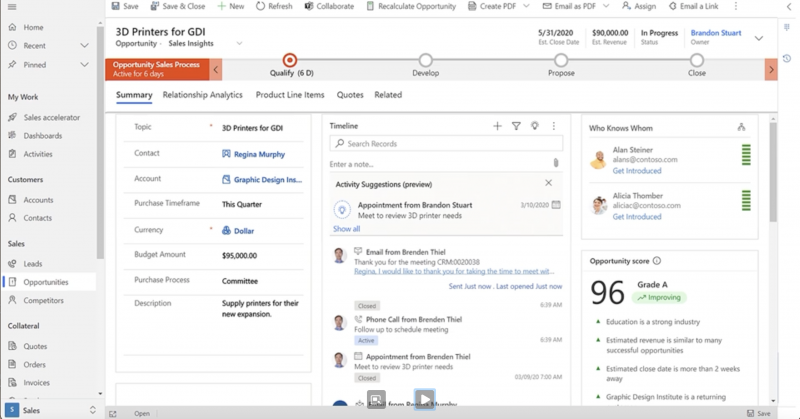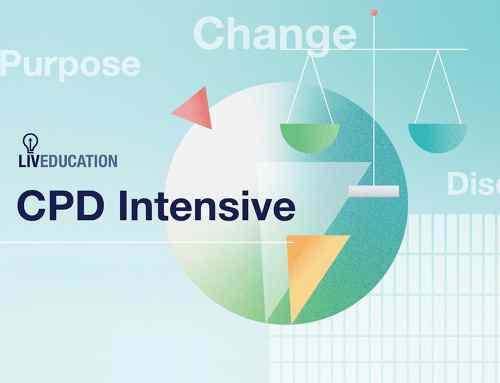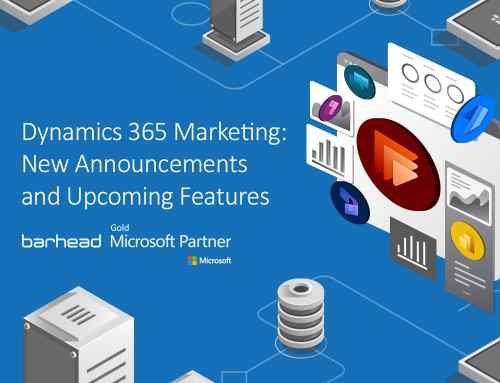
If you’re in the market for a new CRM, chances are you’ve found one of the many articles online offering comparisons of the major software options. As someone who has worked with Dynamics 365 for many years, the Dynamics 365 vs Salesforce articles often come across my radar, and I’m usually left feeling disappointed by how much is missing from those “apples to apples” comparison pieces, when there is so much more in the (virtual) fruit bowl worth exploring.
Where a CRM was once just a system of historical record, for sellers to (reluctantly) record what they had done, it’s time to reimagine CRM as a central and connected system for customer engagement across your organisation. It’s also important to consider the role of the CRM now that sellers work across more stakeholders and more digital tools for communication and collaboration than ever. How can it help make them more productive, rather than becoming just another tool to deal with?
Instead of working through a comparison of the core capabilities of account, contact, and pipeline management, here are some new questions to consider when selecting your CRM:
- What tools are available to help with automated data entry?
- How does it integrate and work with collaboration and productivity tools?
- How does it use data across all your assets – internal and external sources, communications, emails, as well as core systems – to provide insights for sellers to help them close deals?
- How does it put the customer at the centre, enabling you to individualise communications, and build relationships?
Considering these kinds of questions asks you to step back and take a bigger picture view of your data, and your platform, and where and how your CRM fits into that, rather than thinking about a CRM in isolation. If you have already made the investment in Microsoft 365 collaboration and productivity tools, and particularly if Outlook and Microsoft Teams are tools you work in every day, there are benefits unique to the Microsoft platform in using Dynamics 365 as your CRM.

Seamless collaboration and communication
Microsoft Teams is more than just a tool for online meetings – it is a full collaboration platform which works natively with Dynamics 365 to make collaboration a seamless part of the sales process. When you are working in Dynamics 365, you have the full features of Teams chat and channel conversations linked to customer and opportunity records. When you need to collaborate on a deal, you can invite anyone in the organization to view and collaborate on Dynamics 365 records in Teams – at no extra cost.
Dynamics 365 and Outlook are on the same cloud, which means no integration and no third-party connectors for emails and appointments in your CRM. More importantly, having all that valuable data in one place enables you to do more than just email tracking – you can gain insights from emails and appointments, while keeping them secure. Bringing communications, CRM, and AI together helps you understand where relationships are really forming and how they are tracking, and proactively identify the right stakeholders and collaborators to help move deals forward.
AI for productivity and next best action suggestions
Surfacing insights from your data can provide your sellers with proactive suggestions in addition to their everyday activities, that can help them build better relationships and close deals faster. The native connection between Outlook and Dynamics 365 enables next best action suggestions based on email content, such as sentiment (“your customer sounded upset in an email, this opportunity could be at risk”), as well as insight into interactions and response times between you and your customer, across your whole team).
Leads and opportunities are scored based on relationship health and probability of converting or closing, helping sellers focus on the right deals and relationships at the right time.
Real-time automated call transcription makes customer conversations available to everyone involved in a deal, without the seller having to make summaries or identify next steps. Action items, topics discussed, keywords, and sentiment analysis of the conversation are all automatically recorded in Dynamics 365 and can be used to prompt actions.


Customer experience across all touchpoints
Dynamics 365 includes marketing automation capability built on the same platform, sharing the same underlying data as the CRM, which means no need for integration, and no delays in moving or synchronising data. Every data point (including custom tables) in your CRM can be made available to the marketing application, for rich segmenting and personalisation. You can also trigger individual communications based on real time events, such as completing a survey, or checking in on an app, reaching your customers with personal messages via their preferred channel at the right moment. Using Dynamics 365 Sales and Marketing together enables you to orchestrate customer journeys, workflows, and communications across all departments who work with your customers, creating a customer-first experience.
True 360-degree view of the customer
Central to providing great customer experience, and therefore to CRM, is a true 360-degree view of your customer across a multitude of internal and external sources. While a CRM can provide a full view of all interactions in the CRM, most organisations are working with multiple siloed systems which record customer transactions, interactions, and other important data. Dynamics 365 Customer Insights ingests and unifies your customer data from all these sources (in fact, it will also work with data in Salesforce) to create a unique customer profile, providing your sellers with full visibility of all customer interactions in the CRM.
A complete technology stack for digital transformation
Dynamics 365 doesn’t exist in isolation as a CRM solution. It is part of the Microsoft cloud, which is a complete stack of capabilities for digital transformation in your organisation. Dynamics 365 is one of the many application portfolios available – covering Sales, Customer Service, Field Service – as well as a full back-office suite of products for Finance and Operations. It sits alongside the Microsoft 365 suite of productivity and collaboration tools, including Teams, Outlook, Excel, SharePoint, PowerPoint and more. There are developer tools to extend your solutions, from professional developer tools to the low code tools of Power Platform, and over 500 ready-to-use connectors to other systems. All this is built on top of Azure, the cloud platform which provides you with limitless data and analytics capabilities, and a trusted solid foundation of identity and security.
To learn more about Dynamics 365 Sales, watch this short demo video or reach out to us at www.barhead.com/contact.
About the Author: Lisa Crosbie
Lisa Crosbie is a Microsoft Business Applications MVP (Most Valuable Professional) and our Technology Evangelist for Dynamics 365 and the Power Platform. She leads our program of training and events which has helped over 5,000 people get stared with Power Platform, and runs demos, hackathons, and workshops at Barhead Solutions to help customers understand how to get the most out of Microsoft Business Applications. She is a podcaster, YouTuber, blogger and regular presenter at Microsoft and community events.




